Frequency Invariability of (Pb,La)(Zr,Ti)O3 Antiferroelectric Thick-Film Micro-Cantilevers
Abstract
:1. Introduction
2. Testing Scheme and Performance Analysis
3. Results and Discussions
4. Conclusions
Author Contributions
Funding
Acknowledgments
Conflicts of Interest
References
- Pimpin, A.; Charoenbunyarit, I.; Srituravanich, W. Material and performance characterization of Z-shaped nickel electrothermal micro-actuators. Sens. Actuators A Phys. 2017, 253, 49–58. [Google Scholar] [CrossRef]
- Jain, R.K.; Majumder, S.; Ghosh, B.; Saha, S. Design and manufacturing of mobile micro manipulation system with a compliant piezoelectric actuator based micro gripper. J. Manuf. Syst. 2015, 35, 76–91. [Google Scholar] [CrossRef]
- AbuZaiter, A.; Nafea, M.; Ali, M.S.M. Development of a shape-memory-alloy micromanipulator based on integrated bimorph microactuators. Mechatronics 2016, 38, 16–28. [Google Scholar] [CrossRef]
- Kohl, M.; Gueltig, M.; Pinneker, V.; Yin, R.; Wendler, F.; Krevet, B. Magnetic shape memory microactuators. Micromachines 2014, 5, 1135–1160. [Google Scholar] [CrossRef]
- Aktakka, E.E.; Peterson, R.L.; Najafi, K. High stroke and high deflection bulk-PZT diaphragm and cantilever micro actuators and effect of pre-stress on device performance. J. Microelectromech. Syst. 2014, 23, 438–451. [Google Scholar] [CrossRef]
- Kim, M.; Shin, Y.J.; Lee, J.Y.; Chu, W.S.; Ahn, S.H. Pulse width modulation as energy-saving strategy of shape memory alloy based smart soft composite actuator. Int. J. Precis. Eng. Manuf. 2017, 18, 859–901. [Google Scholar] [CrossRef]
- Lee, J.A.; Li, N.; Haines, C.S.; Kim, K.J.; Lepró, X.; Ovalle-Robles, R.; Kim, S.J.; Baughman, R.H. Electrochemically powered, energy-conserving carbon nanotube artificial muscles. Adv. Mater. 2017, 29. [Google Scholar] [CrossRef] [PubMed]
- Hochbaum, A.I.; Chen, R.; Delgado, R.D.; Liang, W.; Garnett, E.C.; Najarian, M.; Majumdar, A.; Yang, P. Enhanced thermo-electric performance of rough silicon nanowires. Nature 2008, 451, 163–167. [Google Scholar] [CrossRef] [PubMed]
- Kang, G.; Han, G.; Kang, J.Y.; Cho, I.H.; Park, H.H.; Paek, S.H.; Kim, T.S. Label-free protein assay with site-directly immobilized antibody using self-actuating PZT cantilever. Sens. Actuators B Chem. 2006, 117, 332–338. [Google Scholar] [CrossRef]
- Jnnti, J.; Łoziński, A.; Leppävuori, S. LTCC compatible PLZT thick-films for piezoelectric devices. Sens. Actuators A Phys. 2004, 110, 361–364. [Google Scholar] [CrossRef]
- Furuta, A.; Oh, K.Y.; Uchino, K. Mechanical clamper using shape memory ceramics. In Proceedings of the 1990 IEEE 7th International Symposium on Applications of Ferroelectrics, Urbana-Champaign, IL, USA, 6–8 June 1990; pp. 528–529. [Google Scholar] [CrossRef]
- Zhao, H.; Rena, T.; Zhang, N. High-frequency properties of PZT for RF-communication Applications. Mater. Sci. Eng. 2003, 99, 192–194. [Google Scholar] [CrossRef]
- Xu, B.; Cross, L.E.; Bernstein, J.J. Ferroelectric and antiferroelectric films for MEMS applications. Thin Solid Films 2000, 377–378, 712–718. [Google Scholar] [CrossRef]
- Xu, B.; Ye, Y.; Wang, Q.; Cross, L.E. Dependence of electrical properties on film thickness in lanthanum-doped lead zirconate titanate stannate antiferroelectric thin films. J. Appl. Phys. 1999, 85, 3753–3758. [Google Scholar] [CrossRef]
- Zhai, J.; Chen, H.; Colla, E.V.; Wu, T.B. Direct current field adjustable ferroelectric behavior in (Pb, Nb)(Zr, Sn, Ti)O3 anti-ferroelectric thin films. J. Phys. Condens. Matter. 2003, 15, 963–969. [Google Scholar] [CrossRef]
- Hao, X.; Zhai, J.; Kong, L.; Xu, Z. A comprehensive review on the progress of lead zirconate-based antiferroelectric materials. Prog. Mater. Sci. 2014, 63, 1–57. [Google Scholar] [CrossRef]
- Xu, B.; Pai, N.; Wang, Q.; Cross, L.E. Antiferroelectric thin and thick films for high-strain micro-actuators. Integr. Ferroelectr. 1998, 22, 545–557. [Google Scholar] [CrossRef]
- Xu, B.; Ye, Y.; Wang, Q.; Pai, N.G.; Cross, L.E. Effect of compositional variations on electrical properties in phase switching (Pb,La)(Zr,Ti,Sn)O3 thin and thick films. J. Mater. Sci. 2000, 35, 6027–6033. [Google Scholar] [CrossRef]
- Xu, B.; Ye, Y.; Cross, L.E. Dielectric properties and field-induced phase switching of lead zirconate titanate stannate antiferroelectric thick films on silicon substrates. J. Appl. Phys. 2000, 87, 2507–2515. [Google Scholar] [CrossRef]
- Geng, W.; Liu, Y.; Meng, X.; Bellaiche, L.; Scott, J.F.; Dkhil, B.; Jiang, A. Giant negative electrocaloric effect in antiferroelectric La-doped Pb(ZrTi)O3 thin films near room temperature. Adv. Mater. 2015, 27, 3165–3169. [Google Scholar] [CrossRef] [PubMed]
- Liu, J.; An, K.; Liu, L.; He, J.; Chou, X.; Xue, C. Out-of-plane electrostatic actuation of silicon micro-cantilever based on (Pb,La)(Zr,Ti)O3 antiferroelectric thick films. Mater. Electron. 2016, 27, 1–6. [Google Scholar] [CrossRef]
- An, K.; Zhang, H.; Chou, X.; Xue, C.; Zhang, W. High-frequency vibration characteristic of Pb0.97La0.02(Zr0.95Ti0.05)O3 anti-ferroelectric thick films cantilever. Micro Nano Lett. 2016, 11, 803–806. [Google Scholar] [CrossRef]
- An, K.; Li, P.; Chen, D.; Chou, X.; Xue, C.; Liu, J.; Zhang, W. Phase transition current of antiferroelectric (Pb0.97La0.02) (Zr0.95Ti0.05)O3 thick films under thermo-electric coupled field. Solid State Commun. 2014, 180, 64–67. [Google Scholar] [CrossRef]
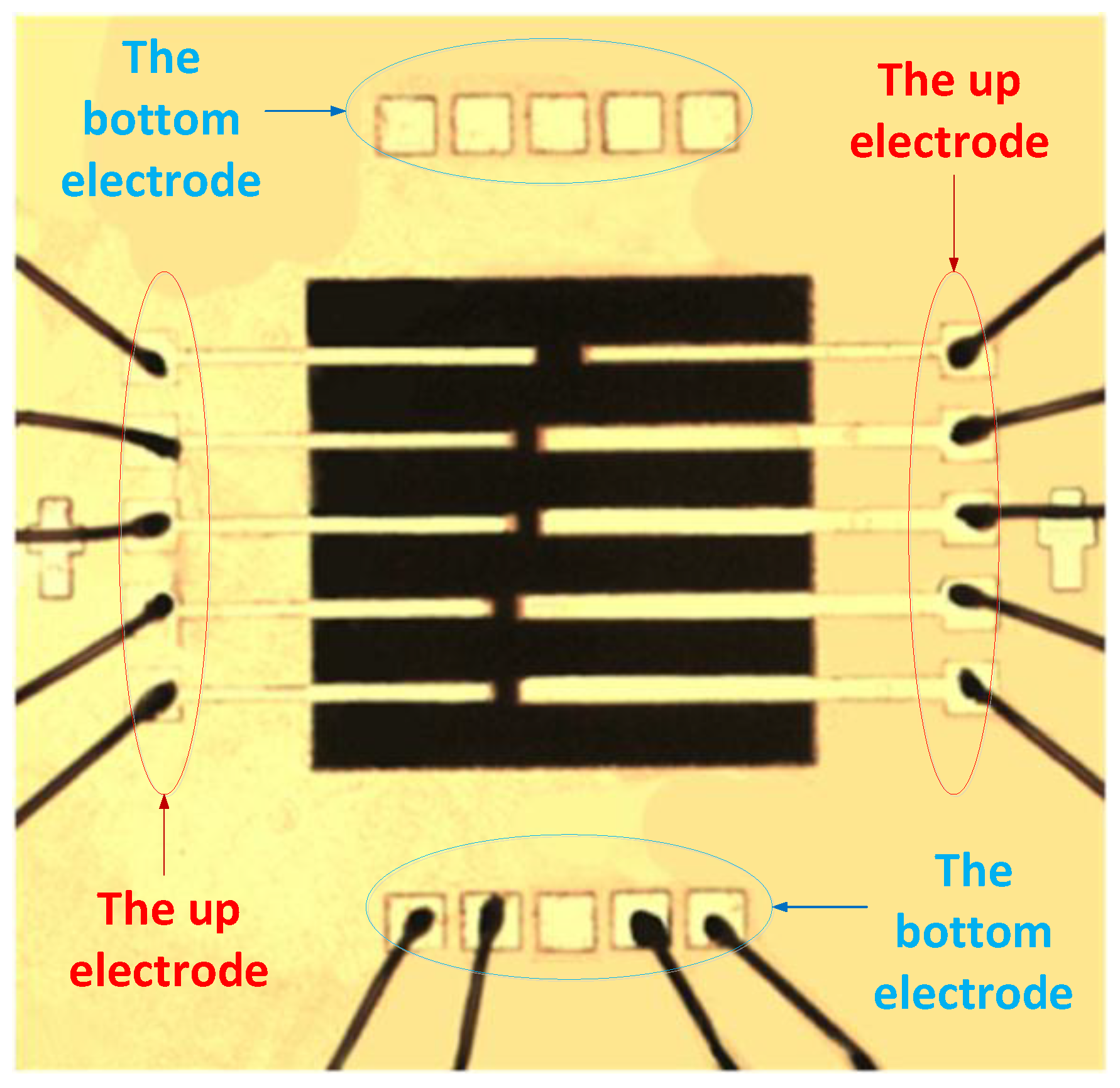
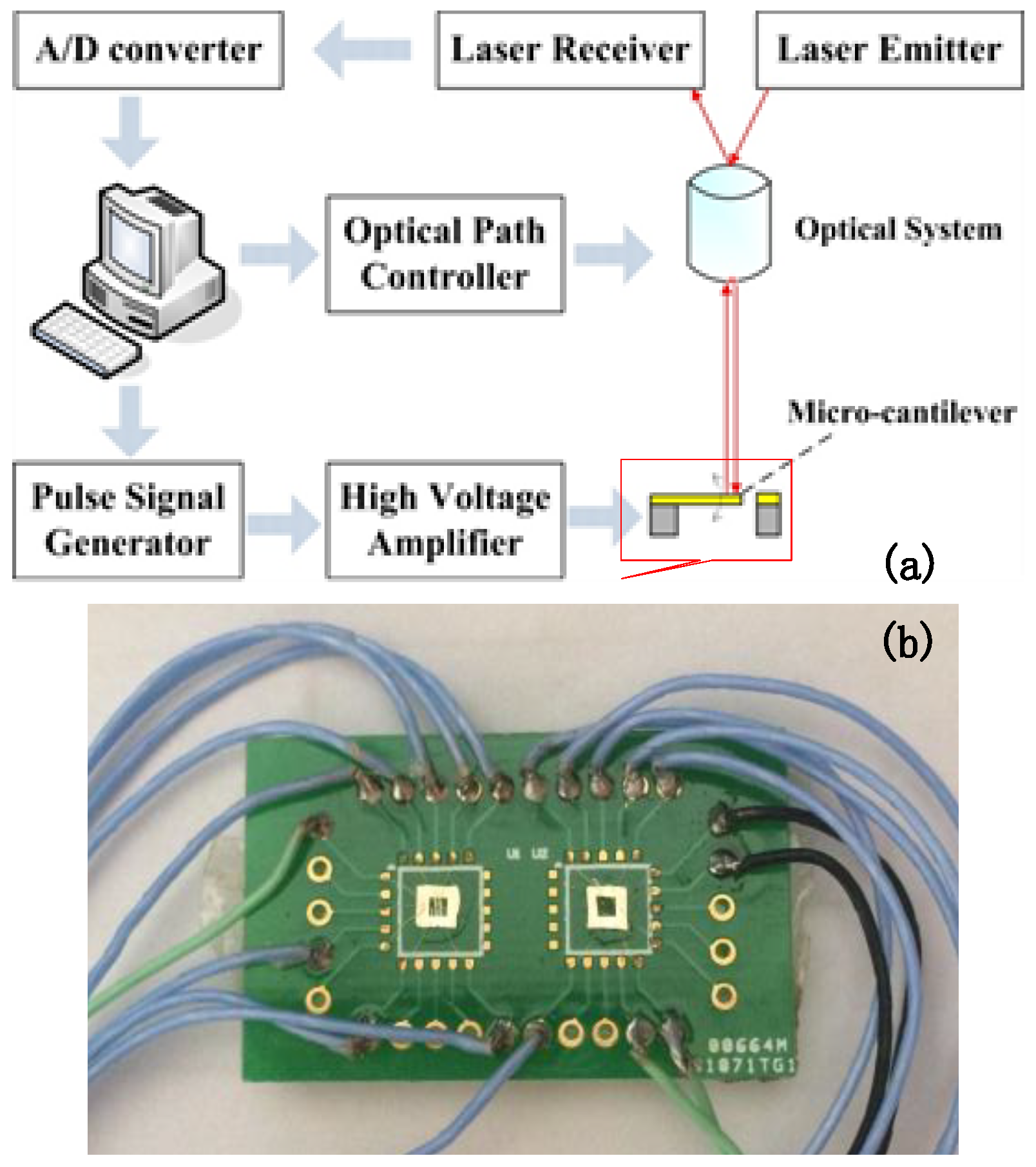
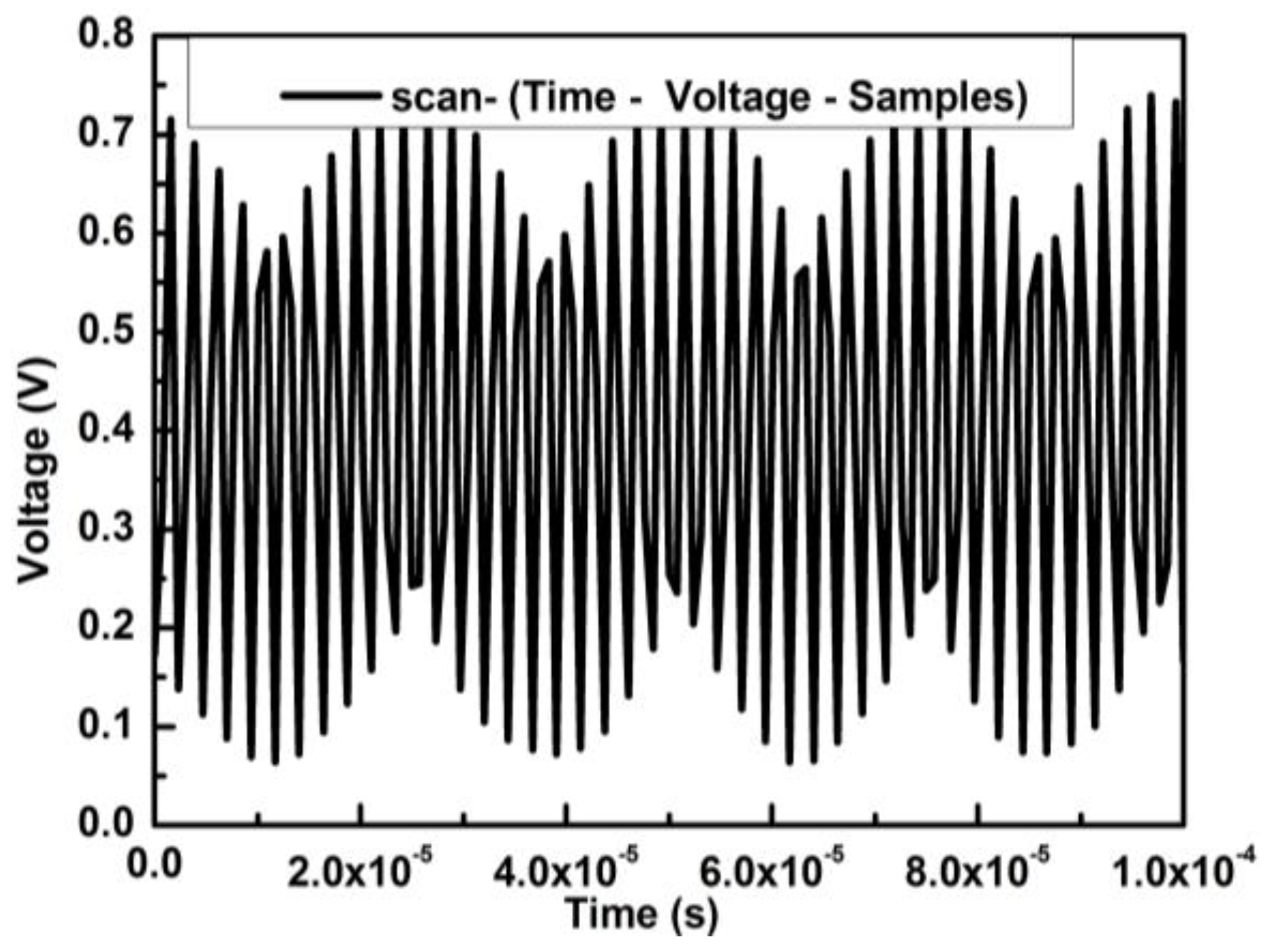
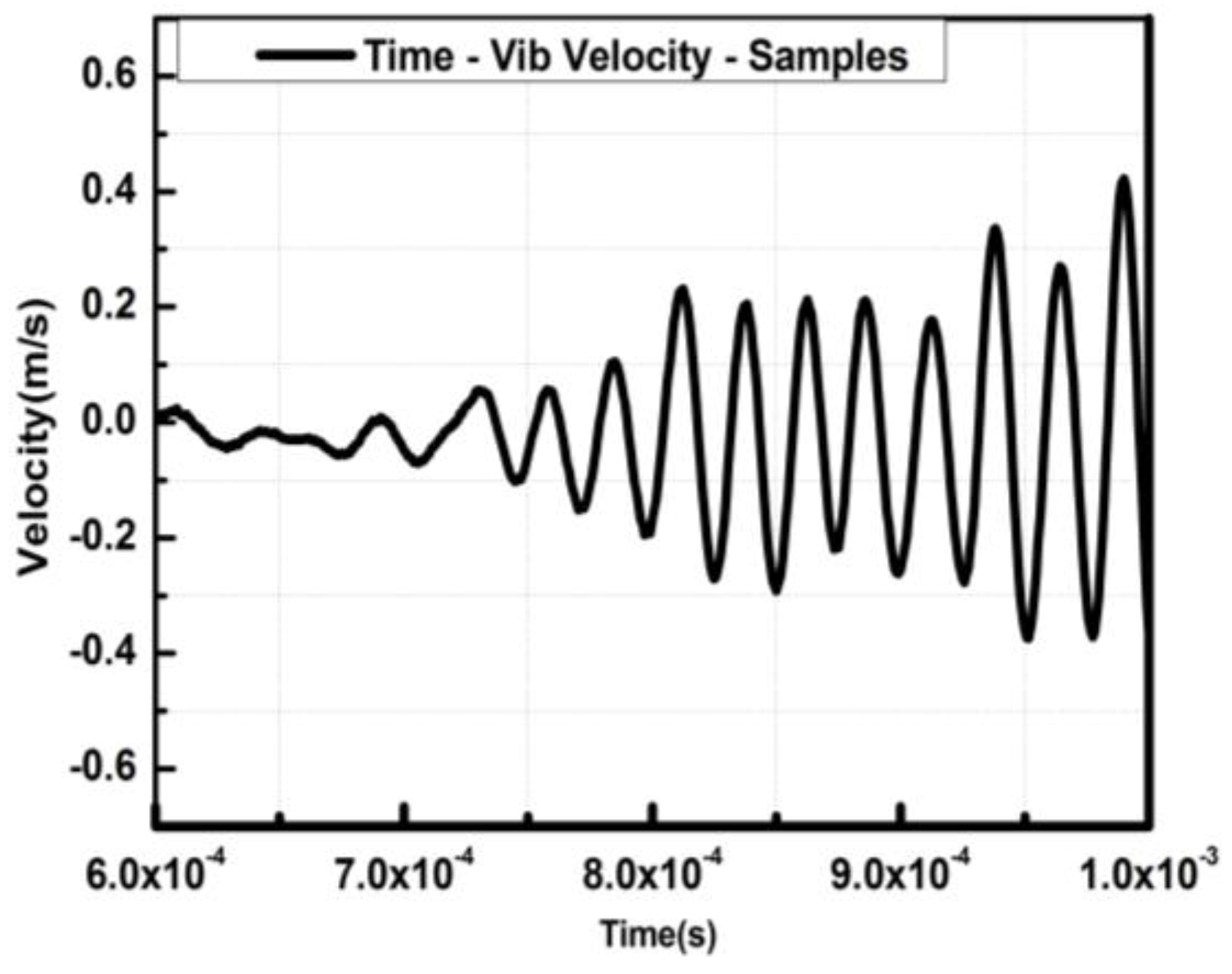
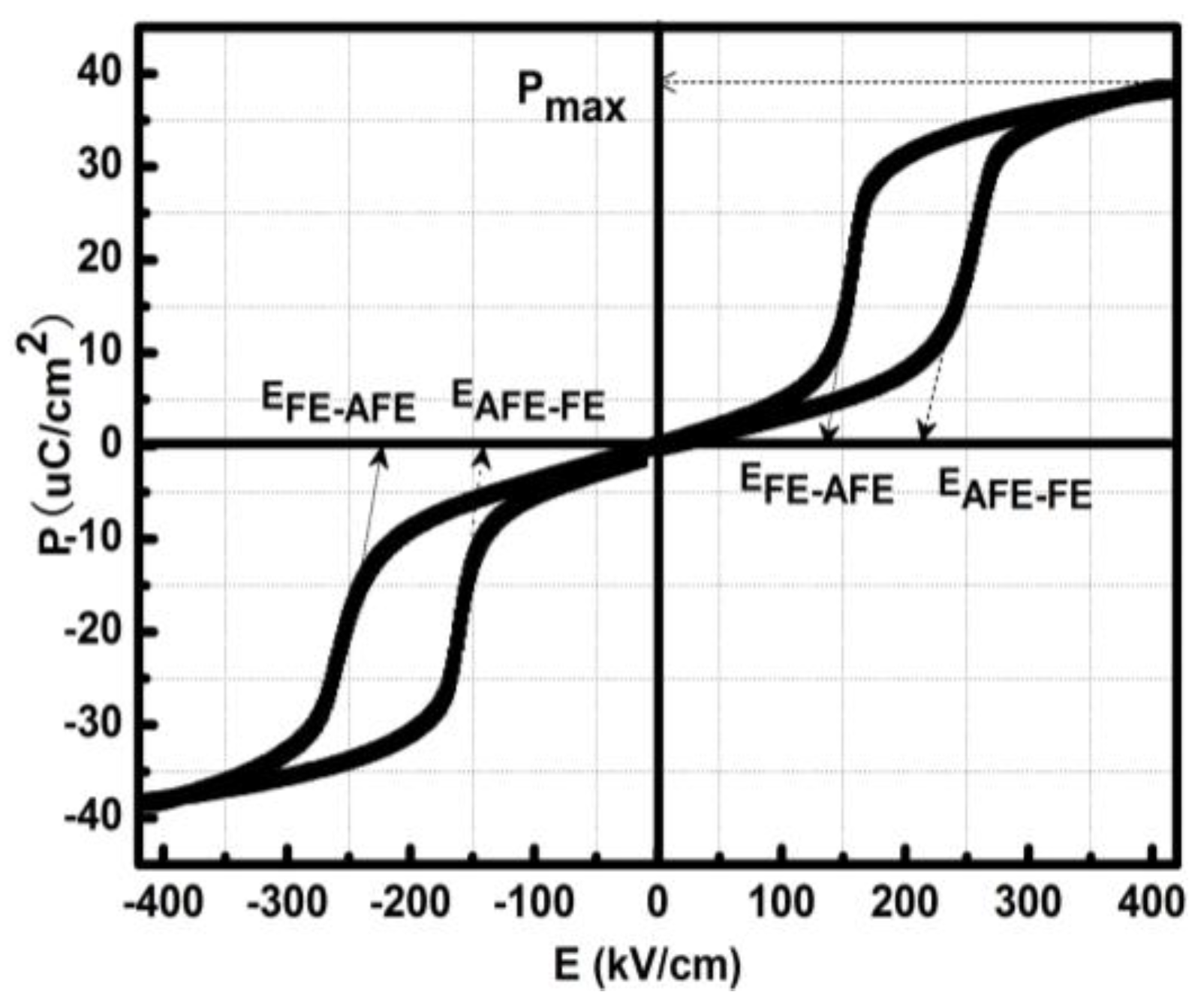
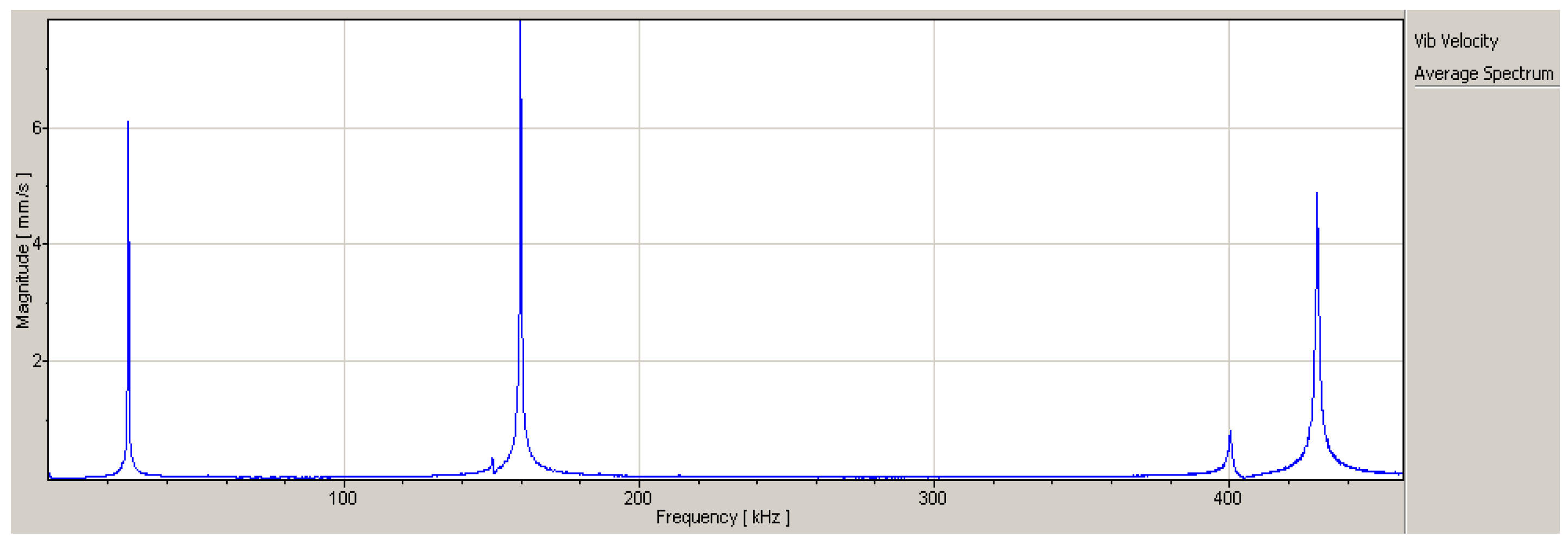
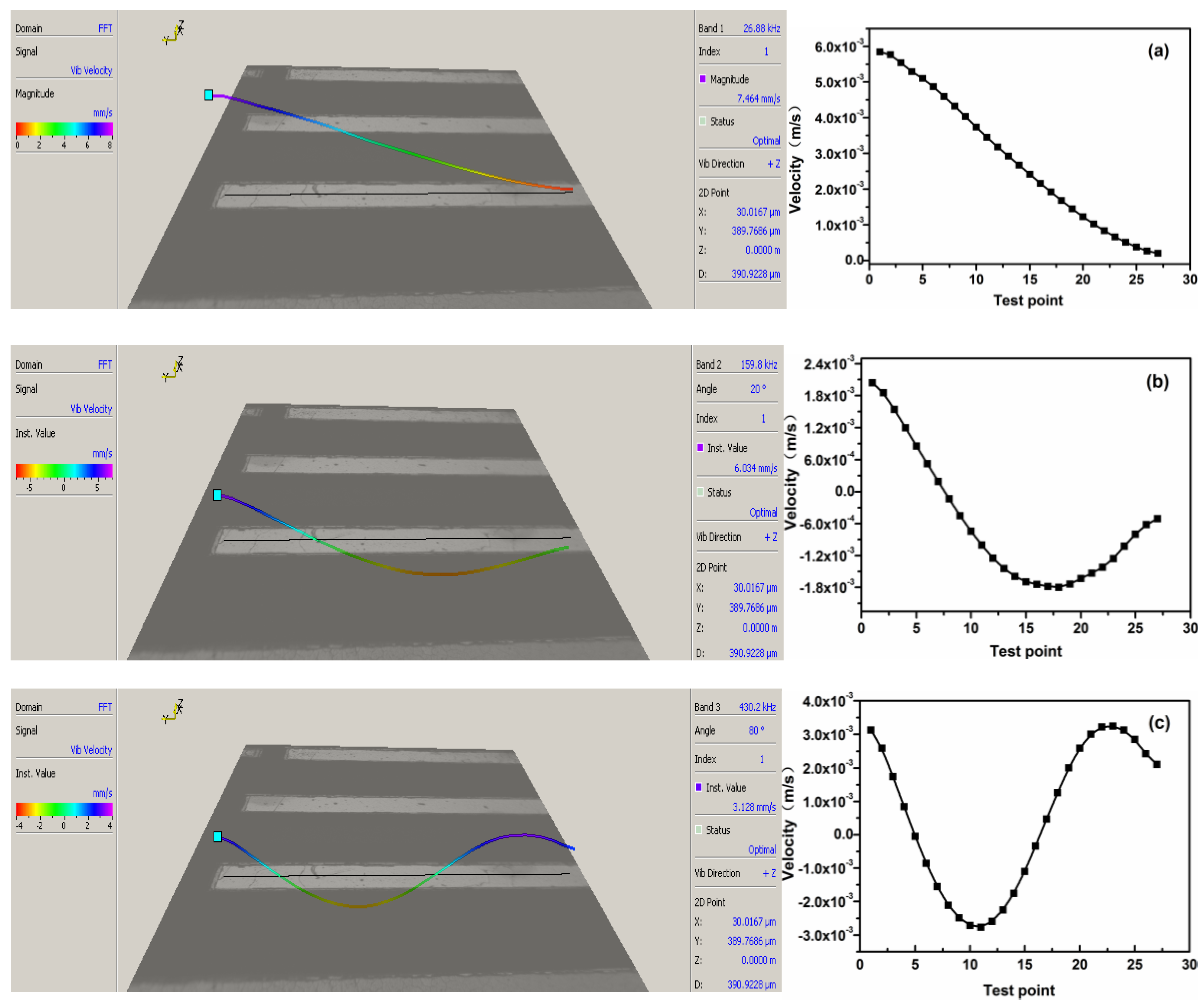
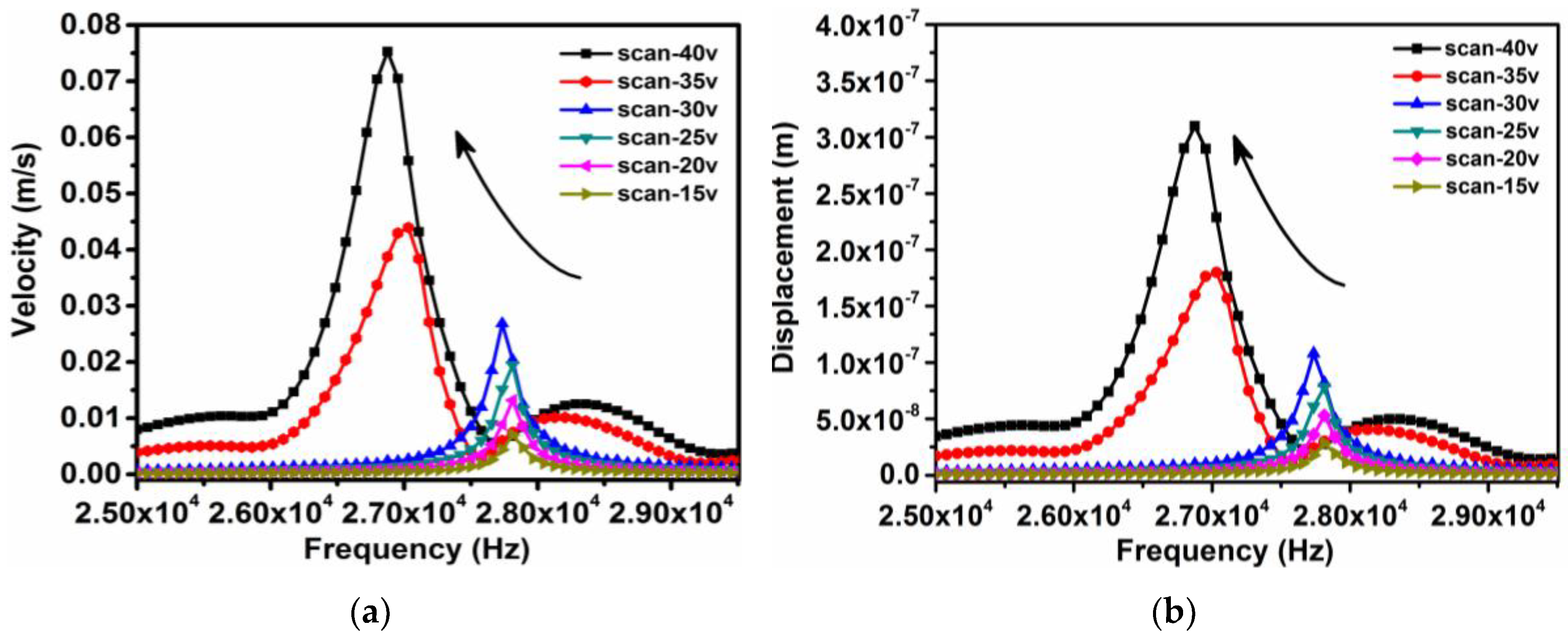

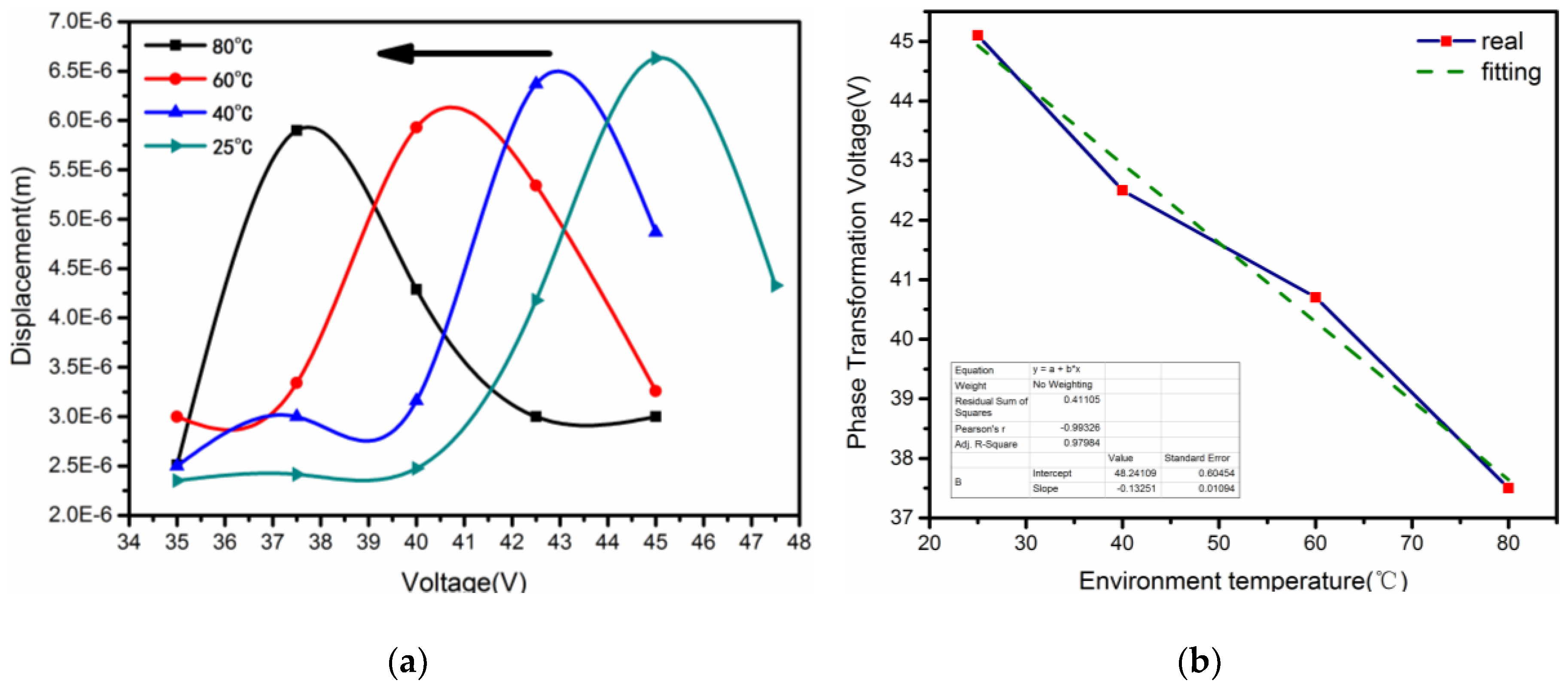
© 2018 by the authors. Licensee MDPI, Basel, Switzerland. This article is an open access article distributed under the terms and conditions of the Creative Commons Attribution (CC BY) license (http://creativecommons.org/licenses/by/4.0/).
Share and Cite
An, K.; Jin, X.; Meng, J.; Li, X.; Ren, Y. Frequency Invariability of (Pb,La)(Zr,Ti)O3 Antiferroelectric Thick-Film Micro-Cantilevers. Sensors 2018, 18, 1542. https://doi.org/10.3390/s18051542
An K, Jin X, Meng J, Li X, Ren Y. Frequency Invariability of (Pb,La)(Zr,Ti)O3 Antiferroelectric Thick-Film Micro-Cantilevers. Sensors. 2018; 18(5):1542. https://doi.org/10.3390/s18051542
Chicago/Turabian StyleAn, Kun, Xuechen Jin, Jiang Meng, Xiao Li, and Yifeng Ren. 2018. "Frequency Invariability of (Pb,La)(Zr,Ti)O3 Antiferroelectric Thick-Film Micro-Cantilevers" Sensors 18, no. 5: 1542. https://doi.org/10.3390/s18051542
APA StyleAn, K., Jin, X., Meng, J., Li, X., & Ren, Y. (2018). Frequency Invariability of (Pb,La)(Zr,Ti)O3 Antiferroelectric Thick-Film Micro-Cantilevers. Sensors, 18(5), 1542. https://doi.org/10.3390/s18051542




